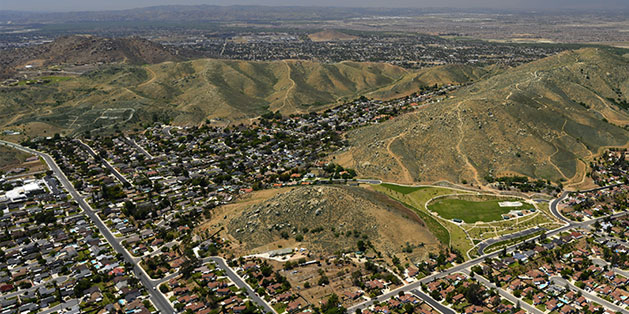DEVELOPMENT: Riverside residents voted “No” on the new measure for re-zoning the La Sierra Property.
By Emily Hughes, Staff Writer
Riverside is well-known for the parks, hills and historical landmarks that are scattered across the city. Among these landmarks are the La Sierra Hills and La Sierra Lands, which together form the La Sierra Property. Though some citizens wished to reform land use of the La Sierra Property through the new Measure L, and others wished to leave the land the way it was, almost all could agree that the La Sierra Property was an important part of Riverside’s community. To ensure their beliefs on the correct use of the land were acknowledged, many Riverside citizens voted “No” on passing Measure L on November 4.
If it had passed, Measure L would have allowed for development of the La Sierra Lands, including housing and senior care facilities, while continuing to protect the La Sierra Hills. The measure would have allowed this by reforming policies in Measure C and Proposition R “that currently allow for development of the La Sierra Hills,” according to the “YES on L” website. The policies of Measure C and Proposition R presently allow 307 homes to be built on the La Sierra Hills and 162 homes on the La Sierra Lands. If Measure L had passed, it would have ensured no homes would be built on the La Sierra Hills, and it would also have permitted up to 1,950 homes to be built on the La Sierra Lands—many more than allowed with Measure C and Proposition R. Because the measure did not pass, however, the zoning of the La Sierra Property will remain the same. Both the Lands and the Hills will have only a few hundred houses built on them at most.
To the surprise of many, the Anti-L campaign had less funding than the Pro-L campaign did. The Pro-L campaign spent over a million dollars on signs, flyers and TV commercials, as well as other campaign necessities. The Anti-L campaign spent around $20,000 and only had hand-painted signs on car windows and street corners. Despite these proportions, “NO” on Measure L received 56.83% of the votes, and “YES” received 43.17% of the votes, which added up to about 32,000 votes in total.
UCR graduate student Robyn Dahl commented that she was happy the measure did not pass. “I think it’s important that we restrict overall development of beautiful places such as the La Sierra Property, instead of increasing it,” Dahl said.
The Pro-L and Anti-L campaigns presented different views on the proper use of this land. While the Pro-L campaign claimed that the development in the La Sierra Lands would help Riverside by providing construction jobs and protecting the La Sierra Hills, the Anti-L campaign claimed that the jobs would not be permanent and that the hills were already protected. Anti-L advertisements claimed that Measure L consisted of “Lies, deception and fraud,” and that “L is bad for Riverside.” Pro-L advertisements stated that the growth would be smart and sustainable and that the hills would be completely saved.
Some supporters of the Anti-L campaign were the Sierra Club, Riverside Greenbelt Defenders and Friends of Riverside’s Hills. Pro-L endorsers included the Greater Riverside Chambers of Commerce, Endangered Habitats League and Ron Loveridge, the former mayor of Riverside. In the hours before the voting was finalized on Measure L, Loveridge commented that the measure was a “once in a lifetime opportunity for the city.” However, since the measure was not passed, Loveridge’s wishes for development on the La Sierra Lands will not be fulfilled.
On November 4, members of Riverside’s community came together to vote on this issue. Despite the difference in campaign funding, Anti-L supporters stopped the measure from being passed.

